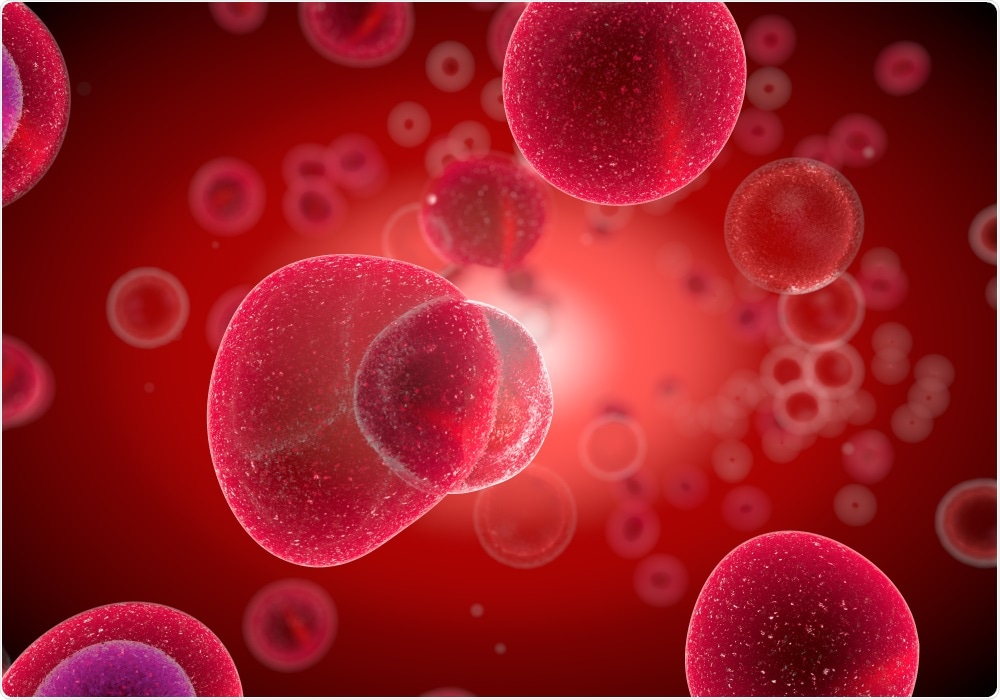In this interview, News-Medical speaks to Dr. Richard Eglen from Corning Life Sciences about the use of organoids in the drug discovery workflow, including the screening of candidate compounds for efficacy, toxicity, and pharmacokinetics.
What are organoids and how are they used in drug discovery and preclinical development?
Organoids are complex 3D cell structures that mimic an organ within the human body. A major benefit of organoids is that they allow scientists to study cells in a more physiologically relevant context. This is particularly useful for pre-clinical research, as organoids provide a better model of the human body than 2D cell cultures. For example, organoids can be used to screen for toxicities and study the metabolic effects of a candidate drug prior to human trials.
 motorolka | Shutterstock
motorolka | Shutterstock
Organoids can also be generated from cells that have been removed from patients, making them a great model for human disease. There are several types of organoids currently available, including ones that mimic the brain, liver, and kidney; those that mimic the brain can be used to develop models of diseases such as Alzheimer’s and Parkinson’s.
What benefits do organoids offer over 2D cell culture?
As mentioned previously, the main benefit is that you can obtain more predictive results for drugs before they enter clinical trials. In addition to this, cells in organoids are architecturally arranged to mimic human organs, meaning that the cells communicate in the same way as they would inside the human body. This allows scientists to study the signals and responses of cells from healthy tissue and compare this to specific disease states.
You can't really do any of this with traditional 2D cell culture, because the cells are arranged on a flat surface, causing their behavior to be far removed from authentic physiology.
Do you think that 2D cell culture will become outdated? Is there still a role for this traditional model?
2D cell culture has been around for decades. It remains a very powerful method for drug discovery because it is compatible with many of the high throughput screening instrumentation and robotics that are routinely used.
2D cultures do produce results; there have been many successful drugs that have been identified using 2D culture. However, it is possible that some promising leads have been missed, or conversely, have translated poorly to the clinically situation. This is where 3D cell culture comes in. What 3D culture is doing is adding another layer of understanding in the drug development process.
I don’t think 2D is going to go away, but I do think it will start to be used in combination with 3D cultures to allow people to compare the effects of their compounds in different models, and so develop a better understanding of their potential clinical activity.
The major goal is to make 3D cell culture technologies as simple and easy to use as 2D culture, and that’s where Corning comes in.
What does the phrase “fail fast, but more confidently” mean in the context of drug discovery and development and how is Corning Life Sciences working to deliver technologies that support this message?
Drug discovery is a long and expensive process. One of the biggest expenditures is patient trials – you want to make sure that any drug that reaches this stage has a good chance of success, as you will be studying these compounds for years and spending millions to evaluate their effects.
The idea behind “fail fast, but more confidently” is that you try to identify toxic or inactive drugs early on before they reach clinical trials. You want to do this quickly, and feel confident that the results are accurate. Then, you can work with a chemist to modify the drug or move on to the next compound.
The earlier you can identify compounds that are active with low toxicities, and vice versa, the more likely the clinical trial will be a success.
Corning has a 50-year history in developing technologies for cell culture. In fact, we’ve been developing technologies for the life sciences in general for over one hundred years, and many of our products are used by both academic researchers as well as pharmaceutical scientists working in drug discovery laboratories.
Corning® Matrigel® is one of our flagship products that scientists can use to support and organoid growth. In addition, we’ve been focusing on developing products that enable people to do 3D cell culture simply and quickly. We’ve also developed products such as a spheroid microplate with 1536 wells for high throughput screening of up to 1 million compounds per day.
We have a very powerful product portfolio that’s making 3D cell culture more accessible and easier for laboratories to adopt into their processes.
 Giovanni Cancemi | Shutterstock
Giovanni Cancemi | Shutterstock
At SLAS 2019, one of the Corning scientists presented a poster on liver spheroids and the detection of hepatotoxins. Please can you tell us about the research and its importance in the context of drug development?
It turns out that one of the best cell types for producing organoids are liver cells, or hepatocytes. At Corning, we’ve developed a liver cell line that can be used to create a very good 3D model of the human liver.
In the study we presented at SLAS 2019, we looked at the ability of liver spheroids to predict the metabolic effects of new compounds. We found that the spheroids were three times more sensitive than cells grown in 2D culture and were accurately able to predict any toxic effects that arose after the compounds had been metabolized by the cells.
Many drugs fail due to liver toxicity, so being able to predict this in real-time and obtain highly sensitive data was a huge step forward for us. This all ties into that theme of, “fail fast, but more confidently.”
What advice would you give to scientists who are thinking of working with organoids for the first time?
When it comes to working with organoids, one of the major barriers is the different protocols that you need for each cell type. For example, the growth factors that promote the differentiation of brain organoids are going to be very different from those that you need to grow a liver organoid.
Using a matrix such as Matrigel within a spheroid microplate to grow organoids is a good option, or you may prefer to start with a simpler system such as a 3D spheroid to learn about the behavior of cells in 3D culture before moving onto a more complex organoid model.
What do you think the future looks like for the use of organoids in drug discovery and development? How do you think Corning Life Sciences will play a role in this?
For sure, organoids are going to provide powerful disease models, particularly in the neuroscience field where scientists are trying to understand the fundamental changes that lead to diseases such as dementia and Parkinson’s disease. These diseases develop over a long time period, so it’s critical to have a 3D model that you can study for many weeks. This may be termed 4D cell culture!
In addition to increasing our understanding of human disease, organoids will allow people to study the chronic effects of drugs, as well as carrying out complex analyses of the mechanism of action for these compounds.
In the future, most of these organoids will be grown from pluripotent stem cells taken from patients. This means that the organoids will have the same genetics and physiology from that particular patient population and thus, be used to stratify patient cohorts for the development of personalized medicines.
As a company, Corning will continue to develop new technologies to support scientists working in this field. Our strengths lie in materials science, so we’ll likely be contributing new surfaces, new media and new applications that take organoids into a whole new era. We’ll also be continuing our work on liver spheroids and other cell types, so we can get to a stage where we are mass producing 3D models for use in high throughput laboratories. If you want to study a million compounds per day, you need a lot of spheroids.
Where can readers find more information?
3D Cell Culture Solutions by Corning Life Sciences
About Dr. Richard Eglen
 Dr. Richard M. Eglen is the current Vice President and General Manager of Corning Life Sciences, an operating division of Corning Incorporated based outside of Boston, Massachusetts (USA). Dr. Eglen is responsible for the management and strategic direction of the organization.
Dr. Richard M. Eglen is the current Vice President and General Manager of Corning Life Sciences, an operating division of Corning Incorporated based outside of Boston, Massachusetts (USA). Dr. Eglen is responsible for the management and strategic direction of the organization.
Richard has over 40 years’ experience in the Life Sciences industry. Prior to joining Corning in 2011, he was president of bio-discovery at PerkinElmer and held other executive management positions in the pharmaceutical, diagnostic, and biotech industries.
Dr. Eglen has worked and published extensively in key drug targets, including GPCRs, kinases, and ion channels, as well as in assay and instrument technology development for high-throughput screening, imaging, and biomarker detection. He has authored more than 325 publications, book chapters, and patents, and serves on numerous industry, academic advisory, and journal editorial boards. He was most recently president of the Society for Laboratory Automation and Screening (SLAS).
About Corning Life Sciences
Corning Life Sciences continues to bring new and innovative laboratory technologies to researchers worldwide. The company’s high-quality, innovative products and services for life science applications enable people around the world to make and deliver life-changing discoveries